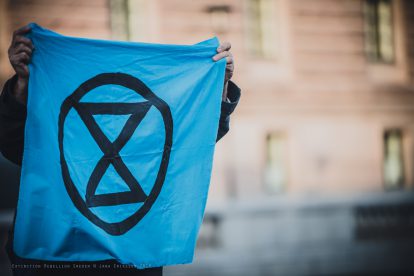

The world’s mega-brands are no longer owned by corporations. They are social movements. Extinction Rebellion, Pride and BLM are today’s true blockbuster brands in the sense that their iconography is everywhere. They are household names, visually ubiquitous and mythologically massive, taking up imaginary and physical space in the way Nike and Apple once did.
Once global corporations wholly defined the whole idea of what a brand was – as famously and critically documented by Naomi Klein in No Logo, back in 1999. The energy driving global myth and symbol was truly in the hands of McDonalds’, Disney, Nike and others like them.
But today that energy has slipped away from corporations. It’s been captured by the world’s new multi-nationals: social movements that rise up and spread quickly and dramatically, leaving their acronyms and symbols on streets around the world.
The creation of icons, myths and stories is taking place in the world of social action, drawing energy and inspiration from that source. The result is a new kind of branding, which turns big ideas such as Love, Justice and Survival into symbols people want to put in their windows and write on the walls. It’s no longer about consuming and commodifying, but compelling action and changing consciousness.
The big question for corporate brands is: where does this put them? The simple answer is to play catch-up with their social counterparts and try to apply their model commercially. But playing catch-up is never a great strategy. It puts traditional brands on the back foot, and can easily seem shallow or cynical.
Perhaps a better way forward is to recognise how the whole landscape of global storytelling has changed. Corporate brands are no longer the world’s storytellers-in-chief – but share the platform with other voices and myth-makers. Through authentic partnership and collaboration, new kinds of stories will emerge.
Louise Jolly
Image Credit: Creative Commons